 Technology peripherals
Technology peripherals
 AI
AI
 Must-know data science: 10 important concepts + the meaning of 22 charts
Must-know data science: 10 important concepts + the meaning of 22 charts
Must-know data science: 10 important concepts + the meaning of 22 charts
01 Bias-variance trade-off
This is a concept that always ranks at the top of the most important theories of machine learning. Almost all algorithms in machine learning (including deep learning) strive to strike the right balance between bias and variance, and this diagram clearly explains the opposition between the two.

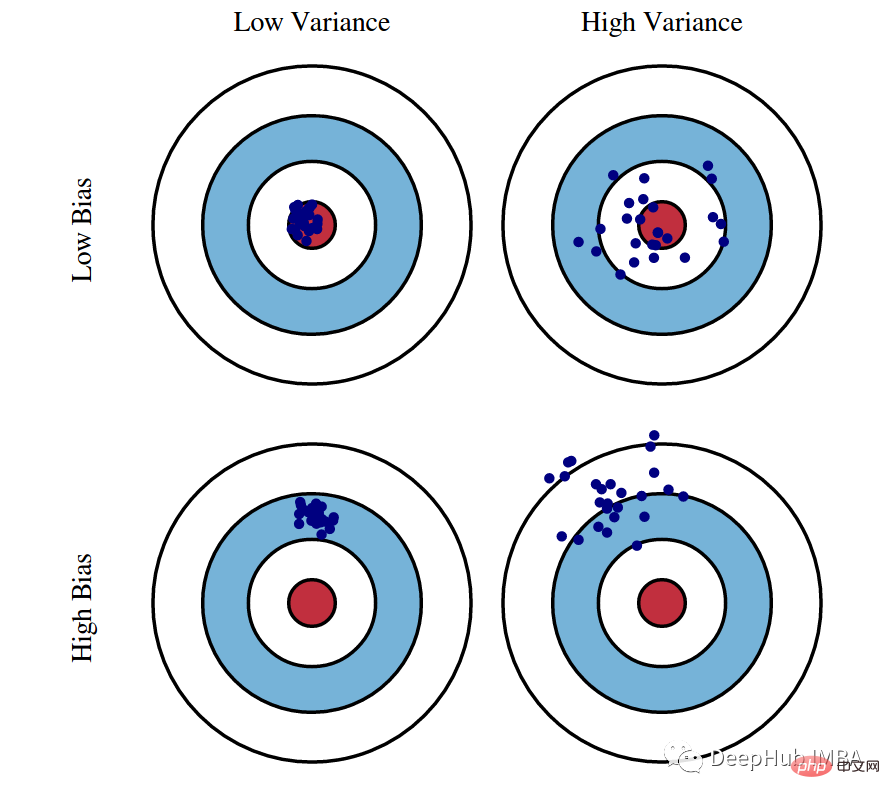
02 Gini Impurity and Entropy
Gini (a measure of lack of homogeneity) and Entropy (a measure of randomness) are both decisions A measure of the impurity of nodes in a tree.

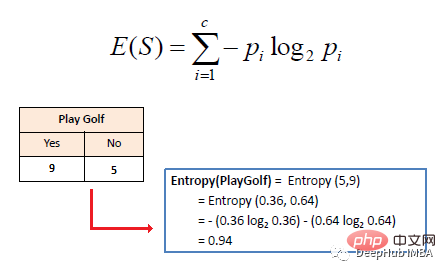
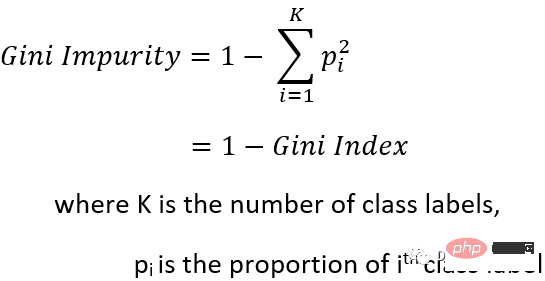
For these two concepts it is more important to understand the relationship between them in order to be able to use Choose the right indicator for the scenario.
Gini impurity (coefficient) is generally easier to calculate than entropy (because entropy involves logarithmic calculations).
03 Precision and Recall Curve
The precision-recall curve shows the trade-off between precision and recall for different thresholds. A large area under the curve represents high recall and high precision, where high precision is related to low false alarm rates, and high recall is related to low false alarm rates.
It can help us choose the right threshold according to our needs. For example, if our goal is to reduce type 1 error, we need to choose high precision, whereas if our goal is to minimize type 2 error, then we should choose a threshold such that the recall is high. 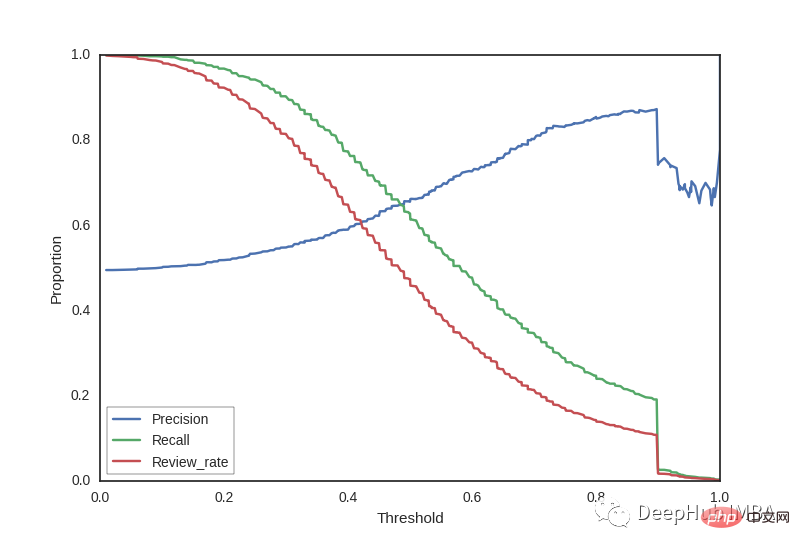
- #The accuracy denominator is a variable: i.e. false positives (negative samples classified as positive) will change every time.
- The recall denominator is a constant: it represents the total number of true values and therefore will always remain the same.
This is why the graph below shows Precision having a wave at the end, while Recall always remains flat.
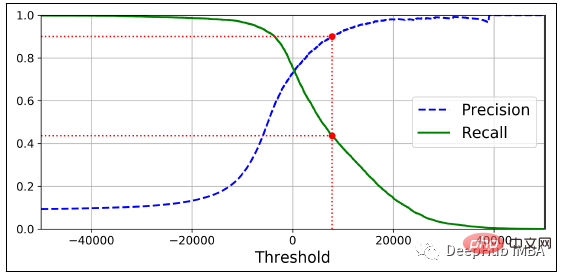
04 ROC Curve
The ROC curve is a graph that shows the performance of a classification model at all classification thresholds.
This curve plots two parameters:
真阳性率<br>误报率

The area under this curve (called AUC) can also be used as a performance metric. The higher the AUC, the better the model.
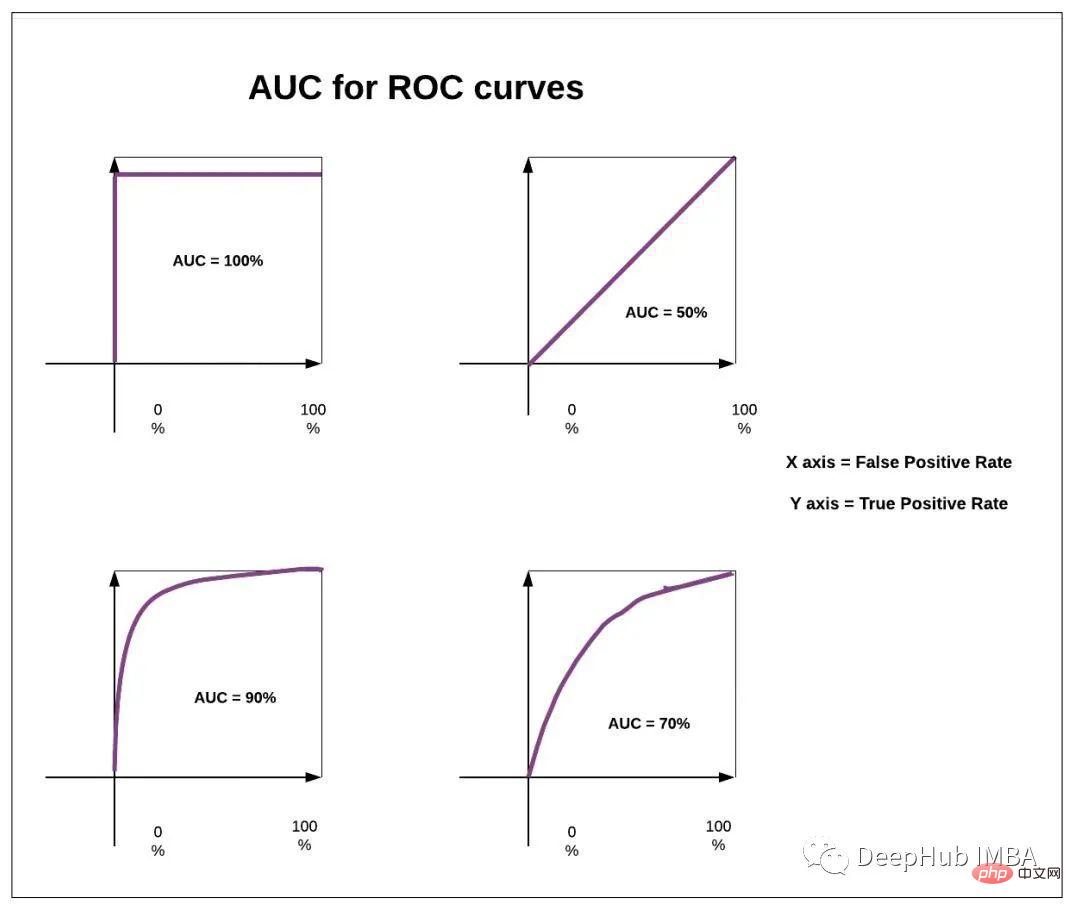
05 弯头曲线
用于K-means算法中最优簇数的选择。WCSS(簇内平方和)是给定簇中每个点与质心之间的平方距离之和。当我们用 K(簇数)值绘制 WCSS 时,该图看起来像一个肘部(弯头)。
随着聚类数量的增加,WCSS 值将开始下降。K = 1时WCSS值最大
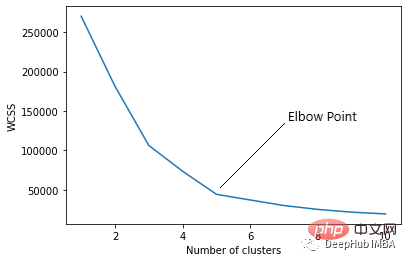
06三块地块
它帮助我们在对高维数据执行主成分分析后,可视化每个主成分解释的变异百分比。为了选择正确数量的主成分来考虑我们的模型,我们通常会绘制此图并选择能够为我们提供足够好的总体方差百分比的值。
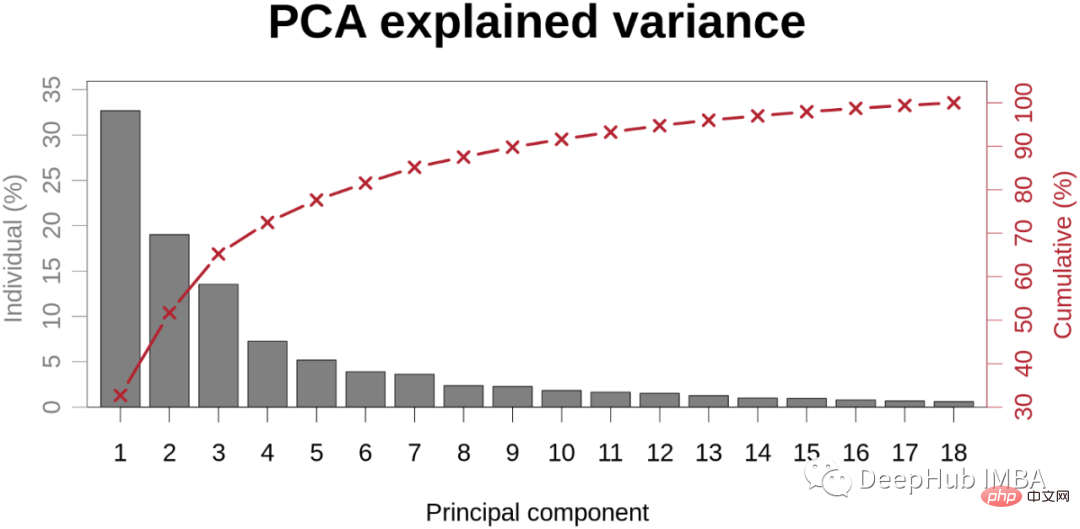
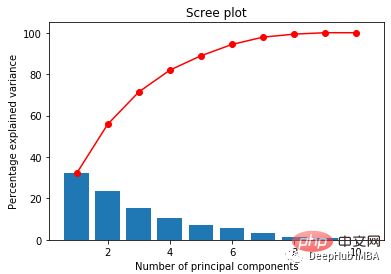

07线性和逻辑回归曲线
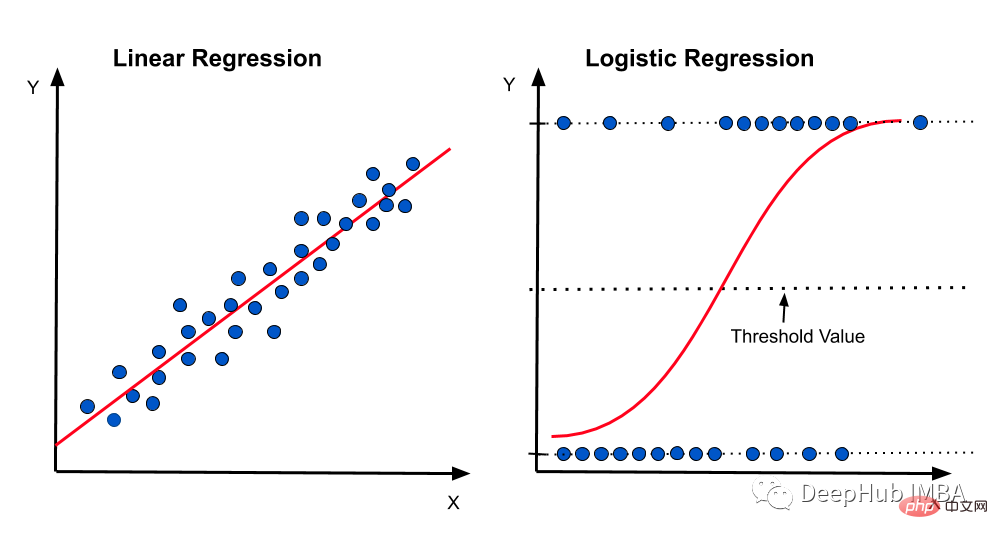
对于线性可分数据,我们可以进行线性回归或逻辑回归,二者都可以作为决策边界曲线/线。但是,在逻辑回归的情况下,由于通常只有 2 个类别,因此具有线性直线决策边界可能不起作用,在一条直线上值从低到高非常均匀地上升,因为它不够陡峭在值突然上升后会得到很多临界的高值或者低值,最终会错误分类。因此,"边界"区域,即概率从高到低转变的区域并不真正存在。所以一般情况下会应用 sigmoid 变换将其转换为 sigmoid 曲线,该曲线在极端情况下是平滑的,在中间几乎是线性的。

08支持向量机(几何理解)

09标准正态分布规则(z-分布)
均值为0,标准差为1的特殊正态分布。
经验法则指出,按照正态分布观察到的数据中有 99.7% 位于平均值的 3 个标准差以内。根据该规则,68% 的数据在一个标准差内,95% 在两个标准差内,99.7% 在三个标准差内。10学生T分布T 分布(也称为学生 T 分布)是一系列分布,看起来几乎与正态分布曲线相同,只是更短和更宽/更胖。当我们有较小的样本时,我们使用 T分布而不是正态分布。样本量越大,t 分布越像正态分布。事实上,在 30 个样本之后,T 分布几乎与正态分布完全一样。
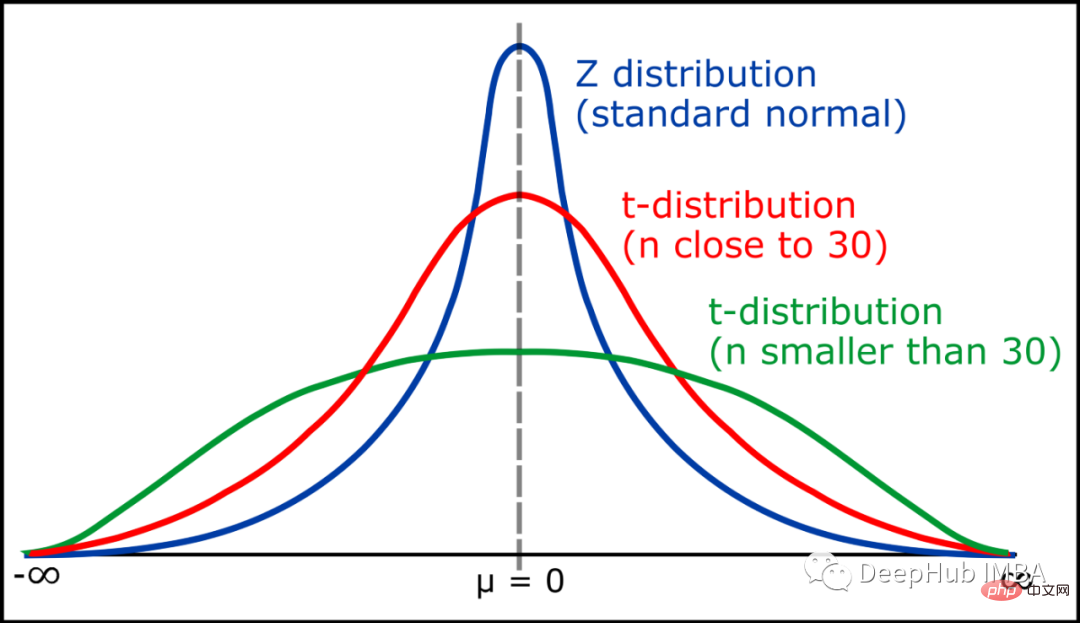
Summary
We may come across many small but critical concepts that form the basis for us to make a decision or choose the right model. The important concepts mentioned in this article can be represented by related diagrams. These concepts are very important and we need to know their meaning the first time we see them. If you have mastered the above concepts, Then you can try to explain what the following picture represents:
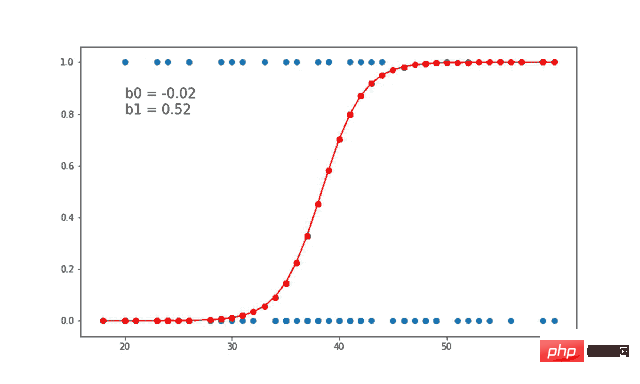
The above is the detailed content of Must-know data science: 10 important concepts + the meaning of 22 charts. For more information, please follow other related articles on the PHP Chinese website!

Hot AI Tools

Undresser.AI Undress
AI-powered app for creating realistic nude photos

AI Clothes Remover
Online AI tool for removing clothes from photos.

Undress AI Tool
Undress images for free

Clothoff.io
AI clothes remover

Video Face Swap
Swap faces in any video effortlessly with our completely free AI face swap tool!

Hot Article

Hot Tools

Notepad++7.3.1
Easy-to-use and free code editor

SublimeText3 Chinese version
Chinese version, very easy to use

Zend Studio 13.0.1
Powerful PHP integrated development environment

Dreamweaver CS6
Visual web development tools

SublimeText3 Mac version
God-level code editing software (SublimeText3)

Hot Topics
 This article will take you to understand SHAP: model explanation for machine learning
Jun 01, 2024 am 10:58 AM
This article will take you to understand SHAP: model explanation for machine learning
Jun 01, 2024 am 10:58 AM
In the fields of machine learning and data science, model interpretability has always been a focus of researchers and practitioners. With the widespread application of complex models such as deep learning and ensemble methods, understanding the model's decision-making process has become particularly important. Explainable AI|XAI helps build trust and confidence in machine learning models by increasing the transparency of the model. Improving model transparency can be achieved through methods such as the widespread use of multiple complex models, as well as the decision-making processes used to explain the models. These methods include feature importance analysis, model prediction interval estimation, local interpretability algorithms, etc. Feature importance analysis can explain the decision-making process of a model by evaluating the degree of influence of the model on the input features. Model prediction interval estimate
 Identify overfitting and underfitting through learning curves
Apr 29, 2024 pm 06:50 PM
Identify overfitting and underfitting through learning curves
Apr 29, 2024 pm 06:50 PM
This article will introduce how to effectively identify overfitting and underfitting in machine learning models through learning curves. Underfitting and overfitting 1. Overfitting If a model is overtrained on the data so that it learns noise from it, then the model is said to be overfitting. An overfitted model learns every example so perfectly that it will misclassify an unseen/new example. For an overfitted model, we will get a perfect/near-perfect training set score and a terrible validation set/test score. Slightly modified: "Cause of overfitting: Use a complex model to solve a simple problem and extract noise from the data. Because a small data set as a training set may not represent the correct representation of all data." 2. Underfitting Heru
 The evolution of artificial intelligence in space exploration and human settlement engineering
Apr 29, 2024 pm 03:25 PM
The evolution of artificial intelligence in space exploration and human settlement engineering
Apr 29, 2024 pm 03:25 PM
In the 1950s, artificial intelligence (AI) was born. That's when researchers discovered that machines could perform human-like tasks, such as thinking. Later, in the 1960s, the U.S. Department of Defense funded artificial intelligence and established laboratories for further development. Researchers are finding applications for artificial intelligence in many areas, such as space exploration and survival in extreme environments. Space exploration is the study of the universe, which covers the entire universe beyond the earth. Space is classified as an extreme environment because its conditions are different from those on Earth. To survive in space, many factors must be considered and precautions must be taken. Scientists and researchers believe that exploring space and understanding the current state of everything can help understand how the universe works and prepare for potential environmental crises
 Transparent! An in-depth analysis of the principles of major machine learning models!
Apr 12, 2024 pm 05:55 PM
Transparent! An in-depth analysis of the principles of major machine learning models!
Apr 12, 2024 pm 05:55 PM
In layman’s terms, a machine learning model is a mathematical function that maps input data to a predicted output. More specifically, a machine learning model is a mathematical function that adjusts model parameters by learning from training data to minimize the error between the predicted output and the true label. There are many models in machine learning, such as logistic regression models, decision tree models, support vector machine models, etc. Each model has its applicable data types and problem types. At the same time, there are many commonalities between different models, or there is a hidden path for model evolution. Taking the connectionist perceptron as an example, by increasing the number of hidden layers of the perceptron, we can transform it into a deep neural network. If a kernel function is added to the perceptron, it can be converted into an SVM. this one
 Implementing Machine Learning Algorithms in C++: Common Challenges and Solutions
Jun 03, 2024 pm 01:25 PM
Implementing Machine Learning Algorithms in C++: Common Challenges and Solutions
Jun 03, 2024 pm 01:25 PM
Common challenges faced by machine learning algorithms in C++ include memory management, multi-threading, performance optimization, and maintainability. Solutions include using smart pointers, modern threading libraries, SIMD instructions and third-party libraries, as well as following coding style guidelines and using automation tools. Practical cases show how to use the Eigen library to implement linear regression algorithms, effectively manage memory and use high-performance matrix operations.
 Five schools of machine learning you don't know about
Jun 05, 2024 pm 08:51 PM
Five schools of machine learning you don't know about
Jun 05, 2024 pm 08:51 PM
Machine learning is an important branch of artificial intelligence that gives computers the ability to learn from data and improve their capabilities without being explicitly programmed. Machine learning has a wide range of applications in various fields, from image recognition and natural language processing to recommendation systems and fraud detection, and it is changing the way we live. There are many different methods and theories in the field of machine learning, among which the five most influential methods are called the "Five Schools of Machine Learning". The five major schools are the symbolic school, the connectionist school, the evolutionary school, the Bayesian school and the analogy school. 1. Symbolism, also known as symbolism, emphasizes the use of symbols for logical reasoning and expression of knowledge. This school of thought believes that learning is a process of reverse deduction, through existing
 Is Flash Attention stable? Meta and Harvard found that their model weight deviations fluctuated by orders of magnitude
May 30, 2024 pm 01:24 PM
Is Flash Attention stable? Meta and Harvard found that their model weight deviations fluctuated by orders of magnitude
May 30, 2024 pm 01:24 PM
MetaFAIR teamed up with Harvard to provide a new research framework for optimizing the data bias generated when large-scale machine learning is performed. It is known that the training of large language models often takes months and uses hundreds or even thousands of GPUs. Taking the LLaMA270B model as an example, its training requires a total of 1,720,320 GPU hours. Training large models presents unique systemic challenges due to the scale and complexity of these workloads. Recently, many institutions have reported instability in the training process when training SOTA generative AI models. They usually appear in the form of loss spikes. For example, Google's PaLM model experienced up to 20 loss spikes during the training process. Numerical bias is the root cause of this training inaccuracy,
 Explainable AI: Explaining complex AI/ML models
Jun 03, 2024 pm 10:08 PM
Explainable AI: Explaining complex AI/ML models
Jun 03, 2024 pm 10:08 PM
Translator | Reviewed by Li Rui | Chonglou Artificial intelligence (AI) and machine learning (ML) models are becoming increasingly complex today, and the output produced by these models is a black box – unable to be explained to stakeholders. Explainable AI (XAI) aims to solve this problem by enabling stakeholders to understand how these models work, ensuring they understand how these models actually make decisions, and ensuring transparency in AI systems, Trust and accountability to address this issue. This article explores various explainable artificial intelligence (XAI) techniques to illustrate their underlying principles. Several reasons why explainable AI is crucial Trust and transparency: For AI systems to be widely accepted and trusted, users need to understand how decisions are made





